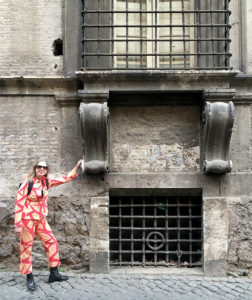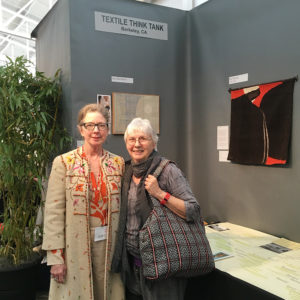Material Culture and Practice:
Conservation allows a seamless dialog between the deep historical lineage of art and cloth with the art of today – the act of making akin to the act of conserving.

Conservation of ancient and historic art textiles reveals a wealth of cultural knowledge through material through time. George Kubler in “The Shape of Time” is a definitve influence for his theory of material culture, a “history of things”, which includes “all materials worked by human hands under the guidance of connected ideas developed in temporal sequence. From all these things a shape in time emerges.” From the understanding gained through material culture, parallels can be drawn between contemporary and ancient textiles to help us to speak through art as well as to know our ancestors – much as we can appreciate how material choices and practices reflect the values and forces present in contemporary culture, we can anticipate a depth of experience of our ancestors in ancient cloth.
As artist, the art-making process is invested with this understanding of material culture gained through conservation. And the skills and focus used in conservation find expressive force through art making – Joyce says, “The degree of concentration and focus that gives me the greatest joy as a textile conservator feeds the contemplative foundation of my art making.”
Reverence
Textiles are a form of language that speaks to us across centuries, responsive to personality, landscape, meaning, and function.
Finely crafted works of art from the cultures of ancient Peru, in absence of a known written language, teach us to find the individual and the historical values and beliefs of their ancient culture in the fibers, precise technique and resilient color of a ritual garment.
Similarly, a woven devotional tapestry thangka of Tibetan Buddhism art is imbued with meaning through the concept of acquiring merit by its maker during its making, as well as through its personification through imagery. Deep consideration of these textiles and their anthropological record offer rich, salient ideas that can inform the process of contemporary art making. Conversely, artists through their intimate knowledge and use of materials can play an important role informing the anthropological narratives that are our current scholarship defining the ancient world.
Biography and beyond:
“My mother sewed my clothes till I was old enough to do it myself, starting in the 5th grade.”
Choosing colors and patterns of fabric was an early individual desire – the canny how-to of grain and pattern and selvedge made sense. Clothing style became a vivid extension of personality through textile and color, and a seminal course at the Univ. of Washington turned the love of fabric and color towards a career.

“I feel deeply honored that my life’s work stands at the intersection of art and history through conservation and art making, and I chose to live in the San Francisco Bay Area because of a long tradition of textile making and innovation that resides here. I am dedicated to this history, to the generations of artists past, my contemporaries, and the growth of the medium forward.”
Since 2014, under the title Textile Think Tank, Joyce continues to research and document California textile art to create an archive of the California textile art movement 1939 to the present. To this end, she has collaborated and worked with numerous esteemed colleagues in the art community – archivist Julie Goldsmith Musson, and artist and founder of Fiberworks Gyongy Laky, among many others. Lisa Schiff, Associate Director for the California Digital Library’s Publishing, Archives, and Digitization group at the University of California has served in an advisory role for project grant applications. Joyce is grateful for the energy the community is contributing to the project.
Over the ten+ years of the project Joyce has applied for numerous granting opportunities:
- SOMARTS 2015
- Center for Craft, Creativity and Design 2014, 2016
- LACMA Art and Technology Grant 2022, 2023
- Center for Craft 2025
- All applications to date have not been awarded
Joyce invites those engaged in the historical and critical study of contemporary textile arts to reach out for queries relating to the California textile art movement. Additional web presence for the project will be forthcoming as funding sources are found to support. Please be in touch if you would like to financially support these efforts.


